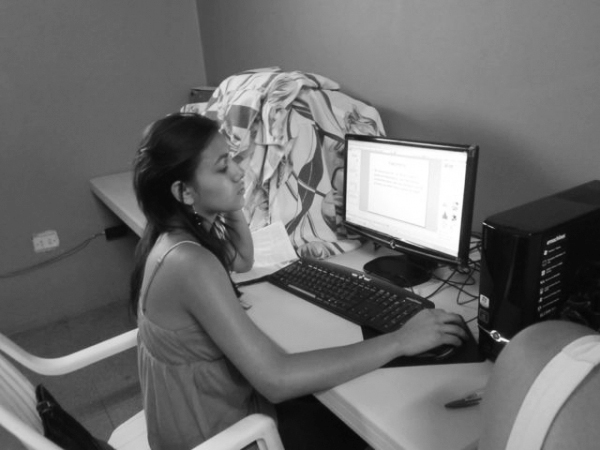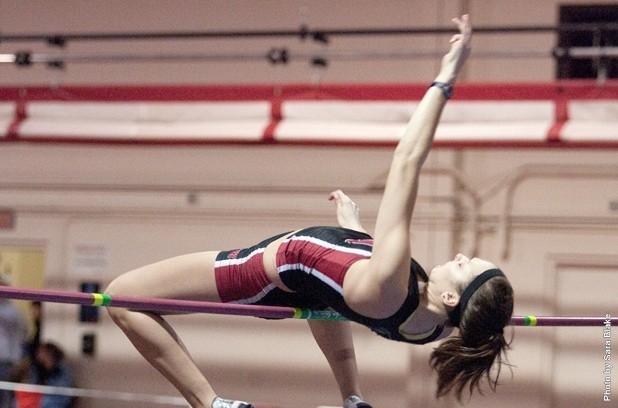By Jane Suttmeier
Transcript Reporter
The Department of Music held a recital for sophomore Zoann Schutte, senior Veronica Duff and sophomore KaitLynn Lynch on March 9 in Sanborn Hall. Instrumentalists Lynch, Schutte and Duff performed for one of the many student recitals this year for their major requirements. Sandra Maynard, academic secretary for the department of music, said she plays a large role in making these events happen.
Maynard said Schutte, Duff and Lynch had to go through in order to put together the recital, perform and receive credit for their work.
“Students must complete an ‘Application for Recital’ – available in my office and also on the music website (http://music.owu.edu) and have it approved by their applied instructor, then by their accompanist (if applicable) weeks or months prior to their recital,” Maynard said. “That form comes to me and at that point they choose a date for their performance and it goes on our departmental calendar.”
Maynard said the average student recital is on a Thursday afternoon and lasts 45 minutes. They usually feature 3 to 5 students, depending on the length of the piece they’ve chosen. Schutte said she chose a piece by Willson Osborne called “Rhapsody for Clarinet” because it was different than the classical pieces she usually performs.
“I enjoyed it most because it was unaccompanied and very avant garde, she said.
Unlike Schutte, Lynch was accompanied by sophomore Connor Stout on bass and Mariko Kaneda on piano for her soprano saxophone piece, “Bachiana Brasileiras #5” by Heitor Villa-Lobos.
“My performance was different than others because it included a cello along with piano accompaniment,” Lynch said. “It was kind of out of the ordinary playing it on soprano saxophone, but the end result was great.”
Lynch said she has been working on the piece since November.
“Villa-Lobos took street musicians and combined it with the feel of classical music,” she said. “It’s a very musical and beautiful piece.”
Maynard said she works hard to make sure the work students do in the music department gets the attention it deserves.
“The music students work so hard preparing for their recitals,” she said. “I feel that it’s important to advertise/recognize their recital dates. Doing it for them validates that it’s important to someone other than themselves.”
Schutte said she had been working on her piece by Osborne on and off for about 8 months, and that it was originally written for a bassoon.
“I played an arranged version for clarinet,” she said. “The piece also featured some very interesting time signatures you wouldn’t usually see in music, such as 16/8 time.”
Maynard said the recital process is important for students who are majoring as well as planning careers in music.
“It’s really quite a nice production and it happens almost every week during the school year,” she said. “The students learn what goes into composing a professional program, which will be helpful in marketing their talents down the road,” said Maynard. “Leftover copies of the programs go into the performing students’ files, as part of their record.”
Schutte and Lynch said they plan on pursuing music in their futures.
Lynch said she plans to make music for the rest of her life,and hopes to get a doctorate as well as own a recording studio.
“I’d love to make a student’s musical dreams come true,” she said.
Schutte and Lynch said they also follow the “dream big” motto.
Schutte said she would like to play for large orchestras and hopes to end up working with the Walt Disney Company.
“I’m currently studying music education but I also have interests in performing on multiple instruments,” she said.
Maynard said the music department is a “close-knit group” because there are only around 60 music majors.
“I do feel close to the students and am perpetually amazed at their talents and skills,” she said. “I am very lucky to work with such a wonderful group of students and instructors.”
Maynard also said there are around 100 students who take musical lessons in Sanborn Hall.
“I get to interact with each of these students at some point….and enjoy it very much,” she said.
Maynard said the music department’s 7 full-time and 15 part-time instructors are dedicated to keep up its success in Sanborn Hall, which it has existed since the 1900s.
“They work very hard to recruit new students and then to help each become the best musician and best person they can be,” she said.
Maynard said she uses advertising to create higher attendance to recitals, but the music department is always looking for new ideas.
“Because they are primarily held during the day and because we’re located so far from other buildings on campus, we (unfortunately) don’t have many guests attend the student recitals,” Maynard said. “We’d like to change that.”

